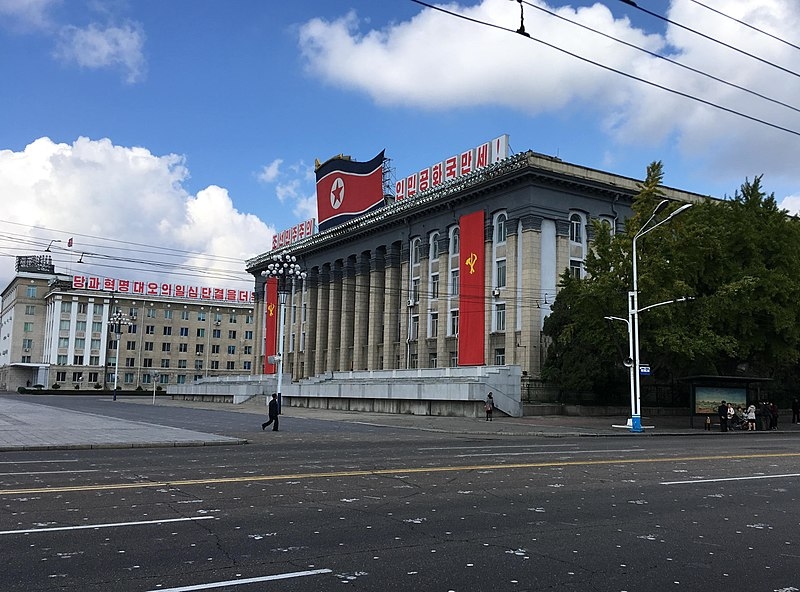North Korea has completed a test of its military reconnaissance satellite that Pyongyang intends to complete by 2023. The satellite also took images of South Korea’s capital, Seoul and Incheon.
North Korean state media outlet KCNA reported Monday that the North Korean Aerospace Development Administration carried out a test of its military reconnaissance satellite on Sunday. The test was described as “important” as it also marked the “final phase” of the development of the satellite that Pyongyang plans to complete by April 2023. The test took place at the Sohae satellite launching station in Cholsan in the North Pyongan province.
According to KCNA, a rocket was equipped with a “test piece satellite” that included multiple cameras, image transmitters and receivers, a control device, and a storage battery when it was launched to an altitude of 500 kilometers at a “lofted angle.” The latest test aimed to review satellite imaging capabilities, data transmission, and the ground control system.
“We confirmed technical indicators such as camera operating technology in the space environment, data processing, and transmission ability of the communication devices, tracking, and control accuracy of the ground control system,” said the spokesperson for the North Korean aerospace.
On the same day, South Korea’s Yonhap news reported that the KCNA also released satellite images believed to be taken by the test-piece satellite showing downtown Seoul and Incheon.
The satellite test comes amidst North Korea’s record missile launches this year, as Pyongyang is believed to be gearing up for its first nuclear test in five years.
Also on Sunday, North Korea fired two ballistic missiles toward the sea off the east coast of the Korean peninsula, according to South Korean and Japanese officials. The South Korean Joint Chiefs of Staff said the launch of two medium-range ballistic missiles were fired 50 minutes apart from each other and were launched from North Korea’s Tongchang-ri area.
The Japanese defense ministry said the missiles flew at an altitude of 550 kilometers and covered a range of 250 kilometers. Japanese vice defense minister Toshiro Ino said the missiles appeared to land outside Japan’s exclusive economic zone, and there were no reports of damage so far.



 Sudan’s civil war is rooted in its historical favouritism of Arab and Islamic identity
Sudan’s civil war is rooted in its historical favouritism of Arab and Islamic identity  US and Japan Boost AI, Semiconductor Alliance; EU Eyes Reduction in China Dependence
US and Japan Boost AI, Semiconductor Alliance; EU Eyes Reduction in China Dependence  History for sale: what does South Africa’s struggle heritage mean after 30 years of democracy?
History for sale: what does South Africa’s struggle heritage mean after 30 years of democracy?  Who will Trump pick as his running mate?
Who will Trump pick as his running mate?  South Korean President Yoon faces foreign policy challenges after the National Assembly election
South Korean President Yoon faces foreign policy challenges after the National Assembly election  Nvidia RTX 4090D Embroiled in US-China Tech Rivalry; South Korea Navigates Chip Export Dilemma
Nvidia RTX 4090D Embroiled in US-China Tech Rivalry; South Korea Navigates Chip Export Dilemma  Turkey’s suppression of the Kurdish political movement continues to fuel a deadly armed conflict
Turkey’s suppression of the Kurdish political movement continues to fuel a deadly armed conflict  US election: two graphs show how young voters influence presidential results as Biden gets poll boost
US election: two graphs show how young voters influence presidential results as Biden gets poll boost  US Commerce Secretary Asserts Huawei Chip Lag, Affirms Export Control Success
US Commerce Secretary Asserts Huawei Chip Lag, Affirms Export Control Success  Georgia is sliding towards autocracy after government moves to force through bill on ‘foreign agents’
Georgia is sliding towards autocracy after government moves to force through bill on ‘foreign agents’  Rishi Sunak wants to cut the cost of ‘sicknote’ Britain
Rishi Sunak wants to cut the cost of ‘sicknote’ Britain 




























